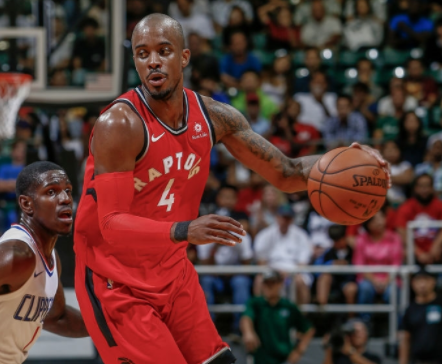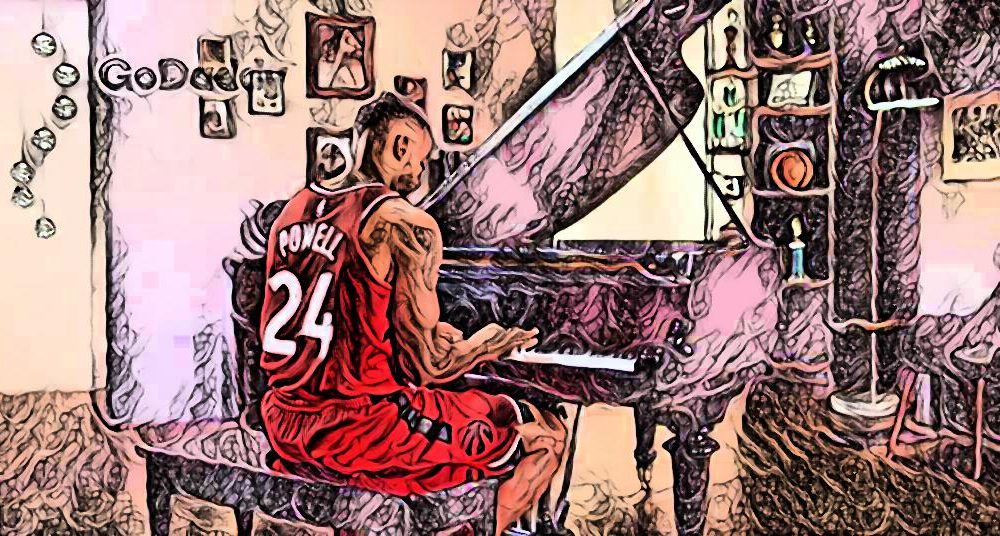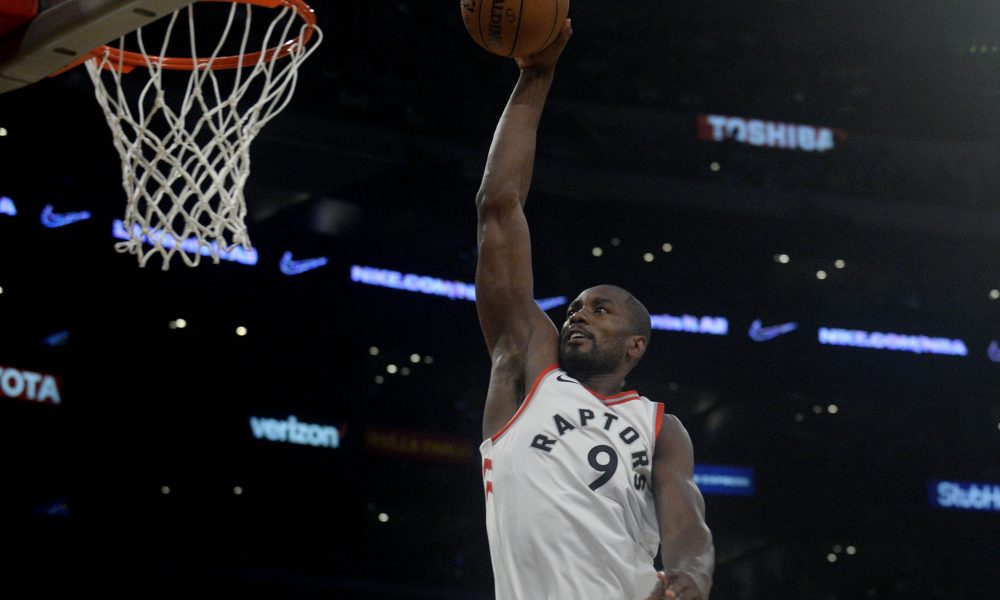This is a follow-up to a piece I wrote in November about how the Raptors and the 905 have worked on developing Lorenzo Brown into a point guard, instead of a score-first combo guard. Lorenzo has been more successful than even the most optimistic onlooker could have predicted – it’s been that kind of season for the entire Raptors’ organization. Here’s how.
On November 14th, Lorenzo Brown recorded 7 assists and 6 turnovers in a close win against the Westchester Knicks. The team won, greatly as a result of 29 points from Brown, but it was clear that the formula was tenuous. Coach Stackhouse himself said that “We want [Brown] to be more of a facilitator and help his teammates to be better… 6 turnovers is too [many] for my point guard.” The team couldn’t win consistently relying on scoring from a low-efficiency combo-guard, and Casey was adamant that Lorenzo had to transform his game.
And he was right! From November 14th to December 15th, the team stumbled to a 2-8 record. The team had trouble scoring, especially in the many games in which Brown was unavailable due to time with the parent club (because of Delon Wright’s shoulder injury). But even when Brown did play during that month-long stretch, the team only went 1-2. In the two losses, Brown had assist:turnover ratios of 13:7 and 11:8. He had an A:TO ratio of 8:1 in the sole win.
Despite Brown’s massive stat line of 36 points, 11 rebounds, and 11 assists against the Rio Grande Valley Vipers on December 5th, the team still lost! I asked Stack about the offence after the game, and he insisted that the defense simply turned Lorenzo into a scorer, instead of a facilitator: “The rotations [against Lorenzo] never came, so he didn’t really have to make sprays to 3-points shooters. They were content to allow him to have a big game and kind of keep the 3-point shooters out of the game. It’s a strategy.” It worked, as the 905 lost (Brown again had 7 turnovers).
Something had to change. The team’s performance since its most recent loss on December 15th has been not only a testament to Lorenzo Brown’s development, but also Jerry Stackhouse’s coaching chops. Heading into the Showcase, the team has won its last nine, and Lorenzo Brown’s improved decision-making with his passing has been the primary change. He has averaged 9.9 assists per game against only 3.2 turnovers. His plus/minus has been +9 or higher in every game but one. In that one game against the Fort Wayne Mad Ants on December 23rd, Lorenzo had 11 assists and 10 turnovers; he had a plus/minus of -1. In no other game during the streak has he had more than 4 turnovers (which only happened once on January 7th).
It’s been clear during the winning streak that if Lorenzo doesn’t turn the ball over, the team wins. Stackhouse was right all along when focusing on Brown’s turnover numbers (I can’t recall how many times I’ve heard him bring it up during scrums). His success culminated in a masterpiece 15 assists and 2 turnovers against Erie Bayhawks on January 4th, tying the franchise single-game assist record also set this season by Kaza Keane, and covered by Vivek here.
So what’s actually changed? To be a sociologist about it, I attribute Lorenzo’s – and the team’s – improvement to three factors. (Yes, that was an academic joke: sociologists, like Liam Neeson, make lists.) One simple but important answer is that shooters have just started hitting their shots. During the 9-0 rampage, the 905 have shot a respectable 33.7% from 3. If you take away a 2-20 dud in which they won solely on their defensive tenacity, the 905 hit 9 or more 3s in every game of the streak.
Here’s Caboclo just making a tough shot, and in the process he records a shiny new dime for Zo Brown.
A second factor in Lorenzo’s uptick in assists and downturn in turnovers has been the players finally getting to know each other. Coach Stackhouse complained before the home-opener that he barely even knew all of his players’ names. Due to injury, call-ups, and unforeseen departures of key players, it has taken months for the 905 to finally establish some chemistry.
It has helped that the team has shifted Meeks to center full-time and surrounded him with four shooters, which has supercharged the 905 offence. As Lorenzo has risen to the team’s alpha and omega, McKinnie’s role has shrunk to a 3-and-D wing – perhaps the best in the G-League at this role. The hierarchy is set, and the team is a juggernaut at just the right time: heading into the Showcase with a multitude of NBA eyes ready to appraise their games.
The team is finally playing tight, which means plays are run at higher speeds, with players in correct positioning. Plays being run the right way naturally lead to more assists and fewer turnovers for the team’s point guards.
Here is a tidy little play in which Kennedy Meeks sets a screen for Lorenzo and then slips it immediately. Because Brown is such a frightening scoring threat, Meeks’ man defends too high on the screen, which means Meeks is wide open on the roll. Brown threads him the ball on a bounce-pass, which draws a pair of taggers (massive defensive miscue) who abandon Caboclo and Aaron Best. Meeks reads the rotations quickly out of his double team, and he hits Alfonzo McKinnie, whose man rotated to Best in the corner. McKinnie’s original defender returns to take away his shot, so McKinnie swings the ball to Best in the corner. He pump-fakes the closer and dribbles inside the arc for the easiest jumper of his life. The assist should go to Stackhouse, although the threat of Lorenzo’s scoring chops created the original weakness in the defense.
Brown’s first three assists in his 15-assist gem against the Bayhawks had little to do with his own play. The first was a simple pass to Caboclo at the top of the key, who drove for a layup. The next two were dump-ins to Meeks, who scored in the post. These plays could as easily not have been recorded as assists, for Brown did nothing but execute the play. But that’s kind of the point! Brown’s decision-making is what got him – and the team – into trouble early in the year. Brown is trusting teammates and play-calls instead of forcing the ball into already-closed windows.
Don’t sleep on Brown though; his talent and vision can still create something out of nothing. The third and final factor in Brown’s improved play has been his own improved decision-making. Here he and Meeks set up for the same play that resulted in the first bucket of the game (see gif above). Meeks slips again, which draws a tagger from Best in the corner. Brown reads the rotation ahead of the defence – he just saw the same rotation minutes before – and rifles a pass to Brown’s shooting pocket in the corner, who nails the 3 ahead of his returning defender. Sure, this is an option of the play, but it takes high-level IQ and skill to execute. This assist belongs wholly to Brown.
Here’s another dime, in the most recent win of the 9-0 stretch, in which Brown creates – and converts – the entire advantage. He uses a Meeks screen to turn the corner towards the rim, where he waits patiently until he draws the defense. Then he just waits some more until Meeks’ tagger thinks he’s done his job and rotates up to take away Berry’s shot. Finally, Brown dumps the ball into Meeks for the score. This whole play worked because Brown is such a lethal scorer, the defence couldn’t rotate to close the gaps for fear of Brown himself just scoring from in close.
Later in the 4th quarter of the same close win, Brown continued his diming ways. Here, he takes a Meeks screen and fails to turn the corner; the defender he should have drawn is able to close quickly on Malcolm Miller and take away his shot upon Brown’s kick-out. Brown downloads this information and calls for another screen from Meeks. He uses another screen and sees Miller’s defender dropping down again to tag Meeks. Instead of waiting, he slings an over-the-shoulder pass to beat the rotation to Miller, this time resulting in an important 3.
Miller is a patient, defence-destroying terminator. He processes defences early, waiting until any weakness or crack is revealed until he forces any movement to capitalize. Earlier in the season, Brown’s decision-making was far slower, and the results were predictable. Here, he leverages his scoring ability to draw both defenders from a Caboclo screen. So far, so good. Malcolm Miller’s defender shades low to tag Cabloclo, which leaves Miller open at the top of the key. But Brown recognizes this a beat too late, leaving his feet on a pass, and giving an easy steal to Jalen Jones, who races down the court for a dunk. The 905 lost the game as Lorenzo Brown compiled 7 turnovers in the game (despite 18 points and 13 assists).
Now Brown is thinking faster than his body can move. He is using any advantages he creates instead of letting them lapse, and his numbers reflect his huge improvement. Brown is shooting less. In his masterpiece against the Bayhawks he only recorded 8 points on 8 shots; counterintuitively, this is good. As defences key in on Brown’s unique (for the G-League level) scoring ability, he has shown the willingness to give up his shots in favour of teammates.
This has significant ramifications. Lorenzo Brown is an NBA-caliber prospect, which has never been as true as it is now. His greatest strength in the past (aside from his defence, which has always been NBA-level) has been his scoring. His domination at the G-League level has been due to his mid-range shooting; he’s not a terrific 3-point shooter or finisher at the rim, even at the G-League level. For a combo-guard who stands at an average height and weighs below 200 pounds, his defensive tenacity and midrange scoring skills haven’t been enough to earn Lorenzo a full NBA contract.
Now, Lorenzo Brown can score easily, but he uses that skill to improve his team’s offence. His assist-percentage this year is a career high 41.7%, which would be sixth in the NBA behind Russell Westbrook (47.0%), James Harden (45.0%), LeBron James (44.5%). J.J. Barea (! – 42.9%), and Chris Paul (42.4%). That’s it. As the 905 have stormed back into contention for another G-League championship and Lorenzo looks like an NBA-caliber player, one factor looms larger than all others in explaining both developments: Lorenzo Brown is finally a point guard.



